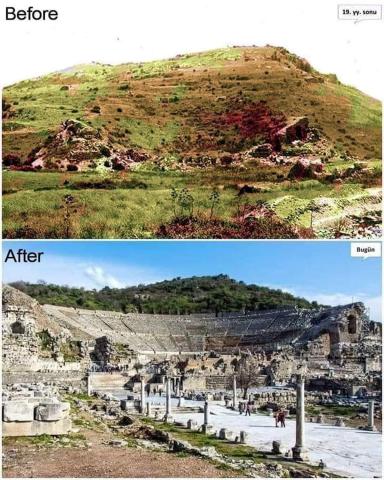Although Twain would not have identified this as an amphitheater by looking at it:
The great theater of Ephesus is a splendidly preserved and very impressive building. This structure, built of marble, has a width of 145 meters, and its audience once reached up to 30 meters. In its heyday, it could accommodate up to 24,000 spectators.
The construction of the theater began in Hellenistic times. In Roman times, during the reign of Emperor Claudius (41-54 AD), the theater was enlarged. The two-storey stage (skene) was built during the reign of Emperor Nero (54-68 AD) and the third storey was added later, in the mid-2nd century. The completion of its construction took place only in the times of Emperor Trajan (98-117 AD). In the early 2nd century AD an aqueduct was constructed to bring water to Ephesus, for the Trajan nymphaeum. Its course required a channel through the upper section of seats.
The Ephesus theatre is important for scholars as an example of a Hellenistic building later transformed by the Roman architects. Some parts of the Hellenistic skene were later incorporated into the Roman-period construction. Their discovery shed some light on the style and shape of the earlier structure.
See: Turkish Archaeological News for an excerpt from Around Ephesus and Kusadasi: TAN Travel Guide by Izabela Miszczak
